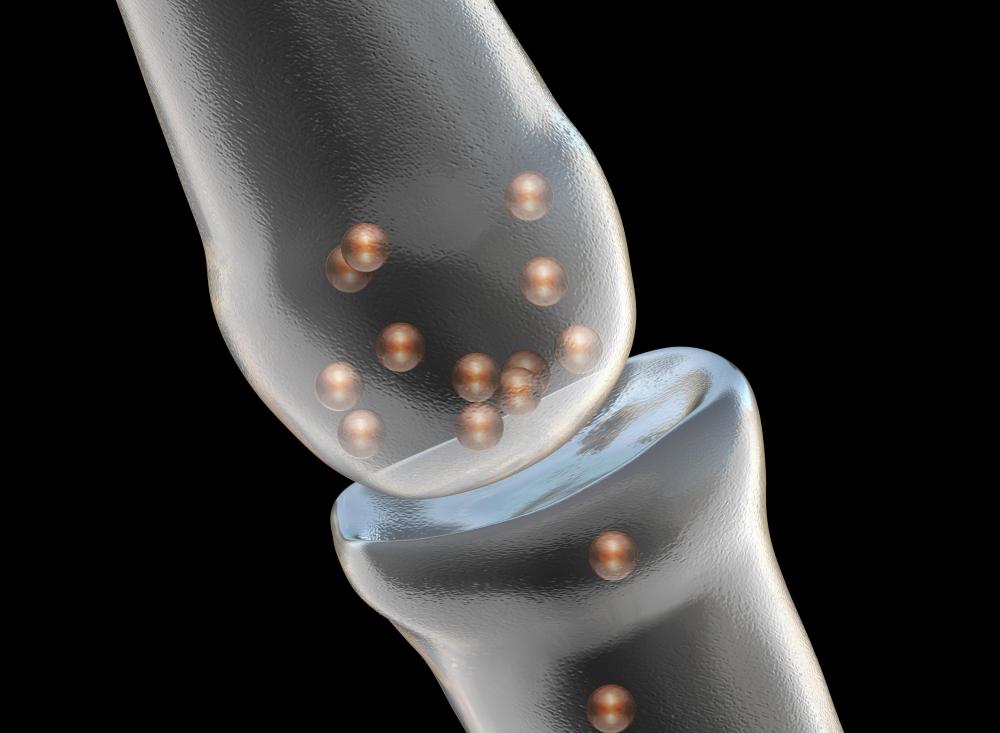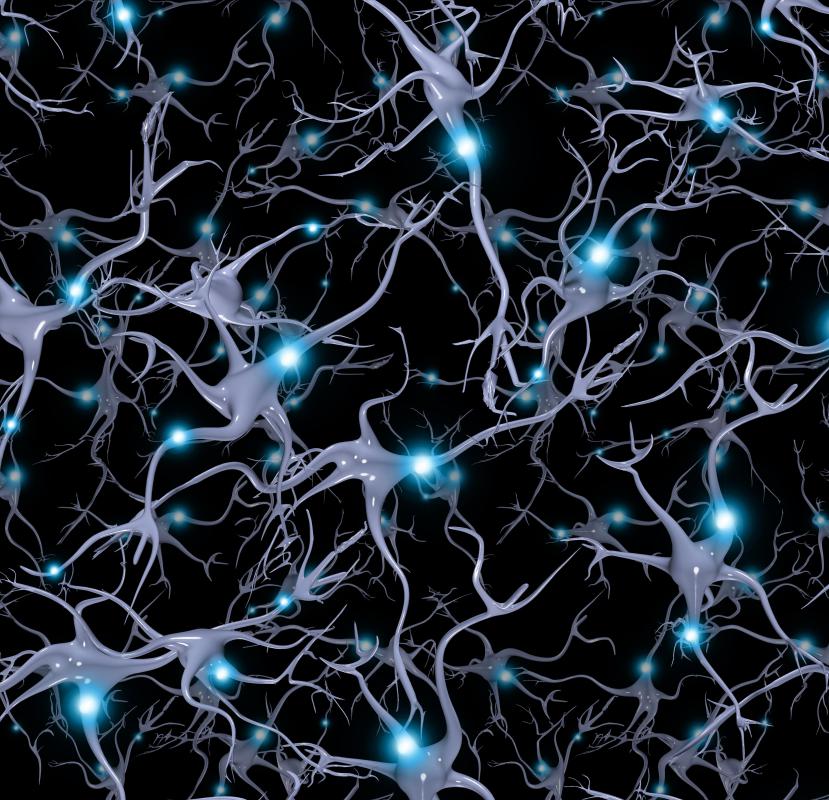At TheHealthBoard, we're committed to delivering accurate, trustworthy information. Our expert-authored content is rigorously fact-checked and sourced from credible authorities. Discover how we uphold the highest standards in providing you with reliable knowledge.
What Are the Different Types of Amino Acid Neurotransmitters?
Amino acids are the small units which make up proteins, and neurotransmitters are molecules which carry signals across nerve junctions, or synapses. In the human nervous system, some amino acids act as neurotransmitters. These include glycine, gamma-aminobutyric acid (GABA), aspartate and glutamate. Amino acid neurotransmitters may either excite or inhibit nerve firing at a synapse. GABA and glycine are thought to mostly inhibit nerve responses, while glutamate and aspartate tend to excite.
At nerve synapses, the end of one nerve, or neuron, is separated from the beginning of the next by a gap known as the synaptic cleft. A nerve signal, which is referred to as an action potential, can not cross the synaptic cleft. Instead, endogenous chemicals such as amino acid neurotransmitters are used to carry the impulse across. A nerve cell from which an impulse travels is known as a presynaptic neuron. The presynaptic neuron produces the amino acid neurotransmitters, while the receiving, or postsynaptic, neuron has receptors which bind them.

Of all the amino acids which function as neurotransmitters, GABA is the only one which is not also used to make proteins in the body. GABA is formed using an enzyme only present in neurons. The amino acid neurotransmitters known as aspartate and glutamate are created inside cells, in tiny structures known as mitochondria. They then move out into the gel that fills the cell, known as cytoplasm, before being enclosed inside bubbles called vesicles.

Glycine is also produced inside mitochondria. The poison known as strychnine blocks glycine receptors on postsynaptic neurons. This prevents glycine from binding and producing its inhibitory effect on nerves, so that unopposed excitation occurs. Certain muscles, such as the diaphragm, are unable to relax. The person with strychnine poisoning may become unable to breathe, with potentially fatal results.

GABA production requires an enzyme known as glutamic acid decarboxylase (GAD). This means that GAD antibodies, proteins with receptors which bind to GAD, can be used to identify which neurons produce GABA rather than other amino acid neurotransmitters. GABA is the main neurotransmitter causing inhibition at nerve synapses throughout the nervous system. Alcohol in the brain binds to GABA receptors, adding to its effect of reducing neuron activity. This is one of the reasons why alcohol can act as a sedative.

Inside the central nervous system, glutamate is the main neurotransmitter causing excitation at nerve synapses. Excess glutamate can be toxic, as neurons are damaged if excitation is prolonged. Brain damage and strokes can sometimes cause a glutamate excess, which then leads to damage and further brain cell loss.
AS FEATURED ON:
AS FEATURED ON:














Discuss this Article
Post your comments